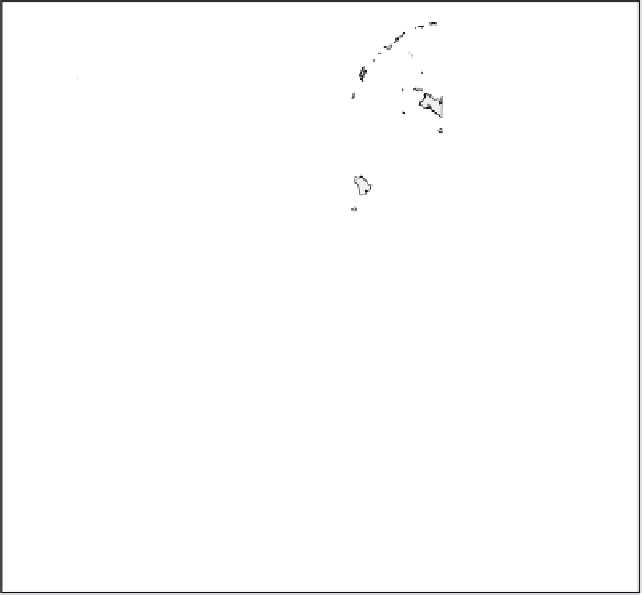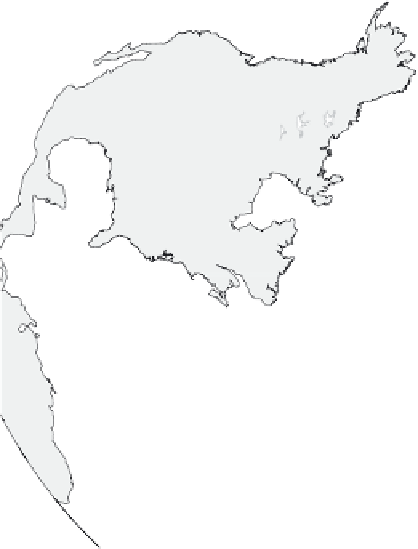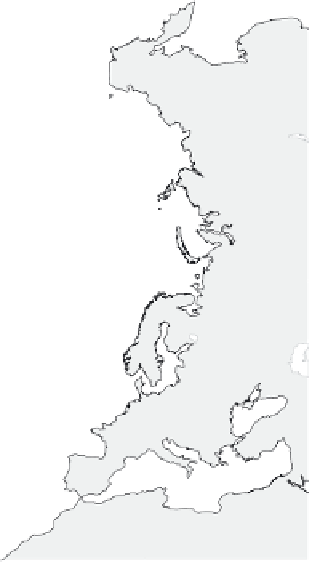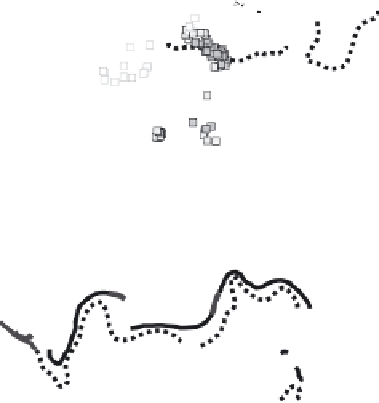Geoscience Reference
In-Depth Information
Figure 5.
Spatial distribution of the standard deviation (1σ) of the 1954-2000 A.D. sea ice cover extent at the reference
sites. The solid line and the dashed line correspond to the modern mean winter sea ice cover limit and the extreme sea
ice limit, respectively.
serve the isotopic composition of the water mass in which
foraminifera have formed their carbonate shell. The isotopic
composition of seawater is thus a function of its salinity. It
is regulated by its dilution with
18
O-depleted meteoritic wa-
ters or by its concentration with some
18
O enrichment due
to evaporative processes. However, it is also affected by the
freezing of water that acts as a fractionation process for salt
versus
18
O properties. First, sea ice usually forms in areas
characterized by low salinity and low-
18
O content of surface
waters. Second, if sea ice shows a very low salt content, it is
slightly
18
O enriched in comparison with water, because of
ice-water fractionation processes [e.g.,
O'Neil
, 1968]. Both
processes result in the production of
18
O-depleted brines
sinking deeper in the water column, whereas, in comparison,
brines resulting from evaporative processes are
18
O enriched
through Raleigh distillation processes. Sea ice formation
thus has a peculiar effect on the isotopic composition of the
water [e.g.,
Tan and Strain
, 1980;
Bédard
et al.
, 1981]. It is
the only process that does not result in correlative changes
of density or salinity and δ
18
O. In all other situations, δ val-
ues and densities (σ
θ
) vary together, either in near colinearity
when salinity is determinant or according to a polynomial
relation when large δ and temperature gradients in the wa-
ter column are involved [cf.
Hillaire-Marcel
et al.
, 2001a,
2001b],
with
18
O
16
O
sample
18
O
16
O
referencevalue
G
18
O
1 u 10
3
U
samplewater
U
purewater
1 u 10
3
,
V
T
where ρ stands for density.
In polar environments where sea ice may form, planktic
foraminifer assemblages are characterized by monospecific
assemblages composed of
Neogloboquadrina pachyderma
(in the sense of
Darling
et al.
[2006]). In the Arctic Ocean,
the calcareous shells of Np often record large oxygen iso-
tope offsets from theoretical equilibrium values, assuming
that carbonate precipitation occurs at approximately mid
pycnocline depth between the cold and dilute surface wa-
ter layer and the underlying warm and saline water mass,
originating from the North Atlantic Ocean [cf. also
Aksu
and
Vilks
, 1988;
Kohfeld et al.
, 1996;
Volkmann and
Mensch
,
























































































Search WWH ::

Custom Search